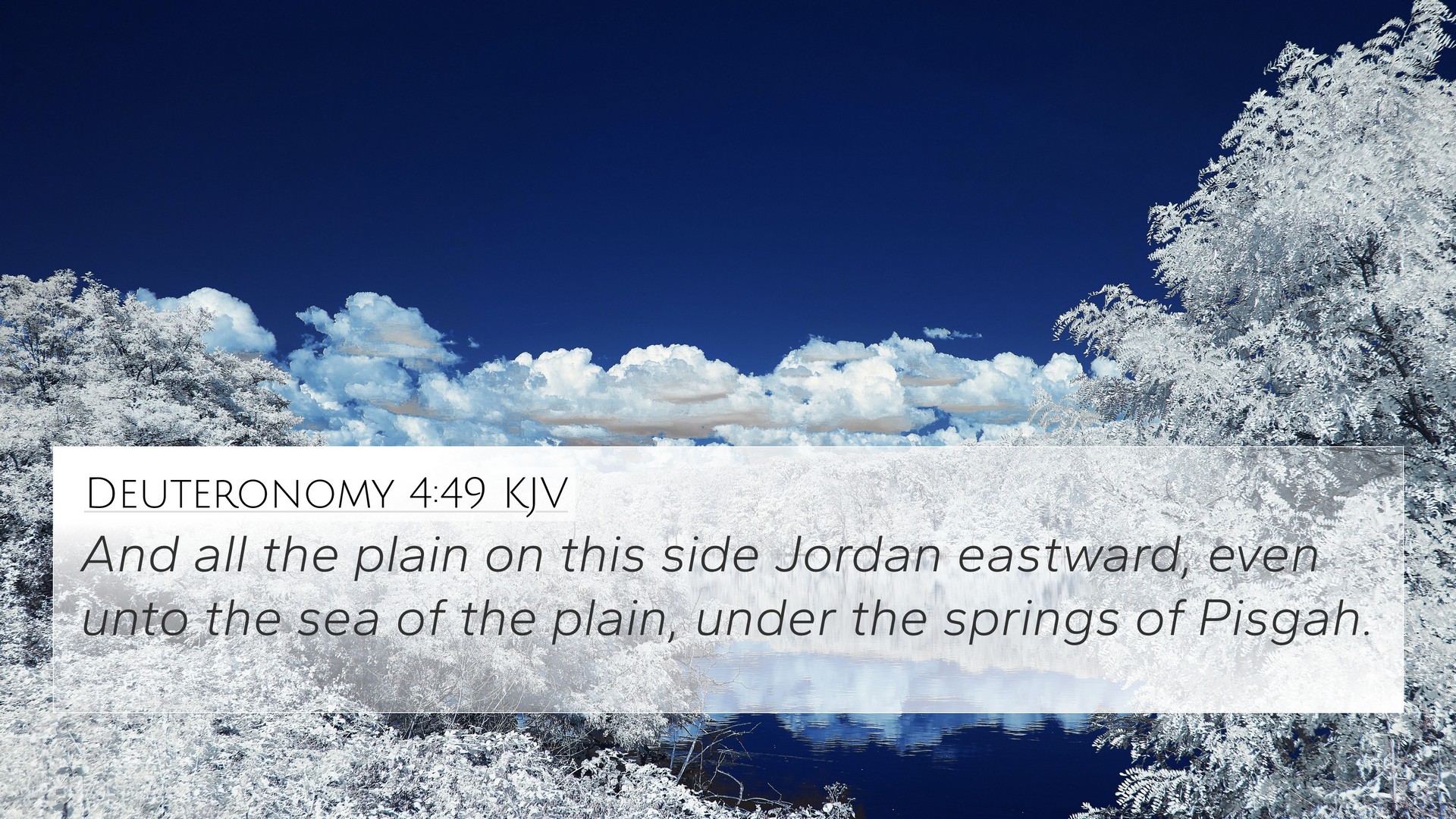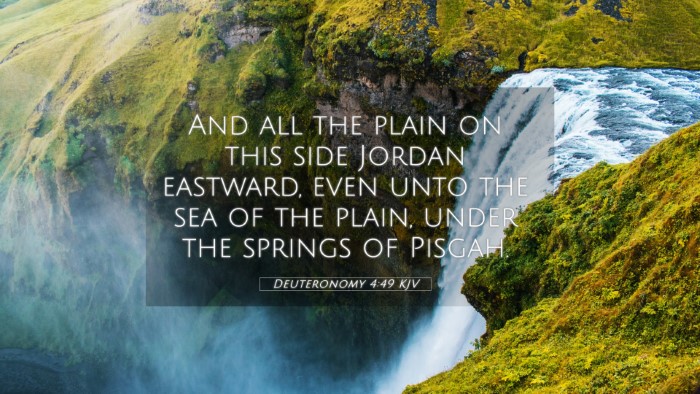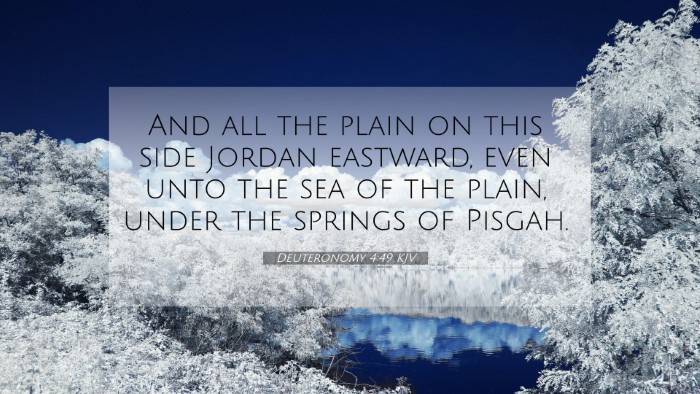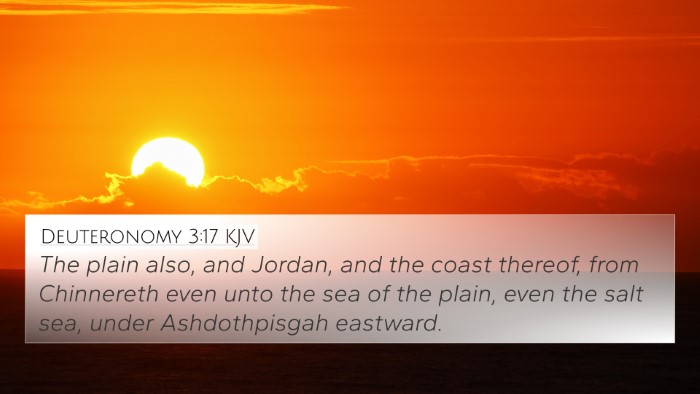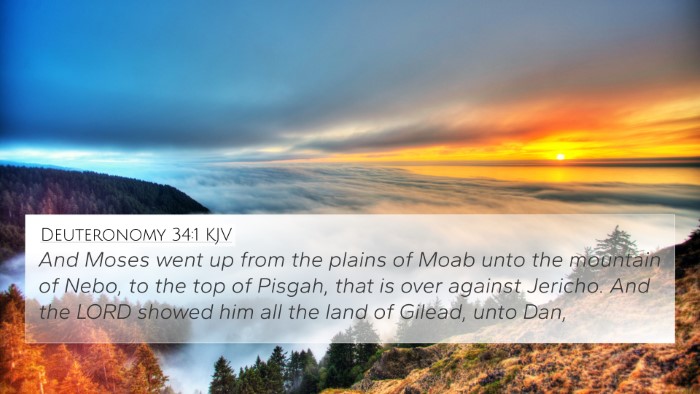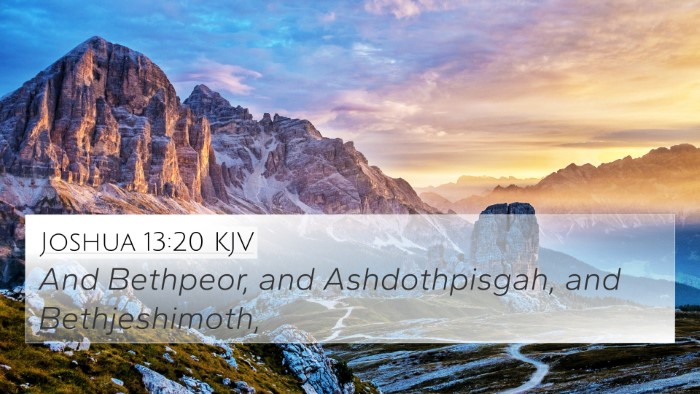Understanding Deuteronomy 4:49
Bible Verse: Deuteronomy 4:49 - "And all the plain which was on this side Jordan eastward, even unto the sea of the plain, under the springs of Pisgah."
Summary of Deuteronomy 4:49
This verse provides a geographical description of the land allocated to the Israelites. It marks the regions they were to inhabit after taking possession of the promised land, highlighting the significance of territory and God’s promises to His people.
Insights from Commentaries
Matthew Henry's Commentary
Henry emphasizes the importance of the land and its boundaries, suggesting that the description affirms God's faithful fulfillment of His promises. The reference to "the sea of the plain" signifies the fertility of the land, which was a blessing for the Israelites.
Albert Barnes' Notes
Barnes notes that this verse serves a dual purpose: not only does it explain the territory on the east side of the Jordan, but it also reminds the Israelites of their divine inheritance. The mention of Pisgah relates to the heights from which Moses viewed the Promised Land, signifying faith and vision in God's promises.
Adam Clarke's Commentary
Clarke points out that the term "plain" can imply a favorable environment for the Israelites. He also connects this mention to the larger context of God’s leading, suggesting that even the descriptions of the land are meant to reflect God’s sovereignty and care for His people.
Biblical Cross-References
Understanding Deuteronomy 4:49 also invites us to explore its connections to other scripture passages. Here are some related verses:
- Deuteronomy 3:17 - Discusses the geographic extent of the territory given to the Israelites.
- Deuteronomy 34:1-4 - Moses views the Promised Land from Mount Nebo, with connections to Pisgah.
- Joshua 12:1-6 - Lists the kings and territories conquered by the Israelites, confirming the promise.
- Numbers 34:3-12 - Details the borders of the land to be inherited, reinforcing God's promises.
- Psalm 136:21-22 - Celebrates God's enduring love in giving the land to His people as a heritage.
- Micah 7:14 - A prayer for God to guide His people in their land, linking themes of possession and divine leadership.
- Acts 7:45 - Reflects on the transfer of the tent in the wilderness, connecting back to the Israelites’ journey to the promised land.
- Hebrews 11:9-10 - Discusses faith of the patriarchs who looked forward to the city whose builder and maker is God, relating to the promise of land.
- Romans 4:13 - Highlights the promise to Abraham and his descendants concerning the earth, linking back to their inheritance.
- 1 Peter 1:4 - Speaks of an incorruptible inheritance, paralleling the themes of promise and land.
Connections Between Bible Verses
Deuteronomy 4:49 is rich in connections and reflects a broader narrative of God’s covenant with His people:
- Thematic Bible Verse Connections: The themes of land, promise, and divine fulfillment are prevalent throughout both the Old and New Testaments.
- Inter-Biblical Dialogue: The notion of possessing land continues to resonate with the New Testament promise of eternal life and spiritual inheritance.
- Comparative Bible Verse Analysis: Through cross-referencing, we see how these verses tie together to portray a consistent message of God's faithfulness.
Tools for Bible Cross-Referencing
To deepen your understanding of this verse, consider utilizing the following resources:
- Bible concordance to identify related terms and topics.
- Bible cross-reference guide to explore similar themes and scriptures.
- Cross-reference Bible study methods to actively engage with the text.
- Bible reference resources for comprehensive study materials.
Final Thoughts
Deuteronomy 4:49 serves as a testament to God’s promises and the importance of remembering His faithfulness in guiding His people. Cross-referencing enhances our understanding and reveals the interconnected nature of Scripture, allowing us to delve deeper into God's word.
